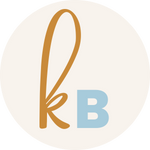Quickie Hip Release
Self-Massage for Low Back Pain
Sometimes I link to products I love. As an Amazon Associate, I may earn a commission from qualifying purchases.
I never lose my keys. I always know where they are because I hang them on a hook by the front door when I come inside.
Except for that time I didn’t.
My arms were full of bags and water bottles and I was herding my children out the door but my keys were not where I expected them to be.
I put everything down, set the kids free, and commenced tearing apart the house. I looked in all the usual places but to no avail.
Finally, I returned to the abandoned pile of stuff by the front door and saw a familiar glint. I dove on them. Yes, it was my keys. They were clipped to my purse.
Has this ever happened to you? You expect to find something in one place only to find it somewhere completely different!
Sometimes, this is how it goes on the massage table, too.
Treating Low Back Pain
When a client comes in complaining of lower back pain, if I only focus my work on the spot where it hurts, my treatment tends to not be very effective.
I know from my experience and training that working in places other than the lower back can help decrease pain in that region.
Pain in itself is a complex sensation that has a lot to do with a person’s nervous system and sometimes very little to do with actual tissue damage in a particular spot.
So first, I help my client to relax. Then I start looking around. I look in the place where my client might expect the source of the pain to be—the lower back. But then I widen my search: I visit the hips, the hamstrings, the inner thighs, and the fronts of the hips, and the feet. When I come back to the lower back, usually the situation has improved.
The point here is, if you’re experiencing lower back pain and want to practice self-massage in hopes of finding some relief, I suggest you focus your attention on more places than just your lower back.
Visiting all the spots I mentioned could take a while and you might be short on time.
© KindBody Movement LLC
Try the Quickie Hip Release for Low Back Relief
If you’re looking for a quick reset, I suggest the Quickie Hip Release. You’ll get a lot of bang for your buck here.
In the Quickie Hip Release, you place therapy balls under the glutes and then open your knees into a butterfly position.
Thanks to a fancy physiological feedback loop known as reciprocal inhibition, this position invites the outer hips (external rotators) and the inner thighs (adductors) to settle down and relax.
In the butterfly position, the external rotators shorten while the adductors lengthen. The pressure of the therapy balls encourages the external rotators to relax a bit more.
Holding the position (as opposed to a lot of rolling around) can help your nervous system settle and that can really sometimes take the edge off of discomfort.
What do I need for the Quickie Hip Release?
Because of its broad surface area, the best ball for the job is the Yoga Tune Up Alpha ball but smaller sized balls can work too. If you don’t have Yoga Tune Up balls, there’s other options. Tennis balls, racquet balls, and Pinky Hi-Bounce balls all work just as well. I would NOT recommend using harder balls (i.e. lacrosse, golf, or bocce) because you’ll be working so close to the sciatic nerve.
Speaking of which, if you experience any tingling in the legs or feet during this pose, try repositioning the therapy balls; you may be contacting that nerve.
You’ll also want a timer for this exercise. It can take some time for your body to relax and you’ll want to make sure you give yourself enough time.
To practice the Quickie Hip Release, you can read these instructions, or you can follow along with this video on the KindBody Movement Virtual Studio.
How to Practice the Quickie Hip Release
Lie on your back.
Bridge your hips up away from the ground a bit and place your therapy balls underneath you.
Hold the therapy balls in place on the ground so they will rest one in the middle of each buttock as you slowly lower your hips down.
Still with your knees bent and feet on the floor, take a few moments to let your weight fully sink onto the therapy balls.
Then open the knees and bring the soles of your feet together into the butterfly position.
Set a timer for about three minutes.
Relax your whole body.
Focus on your breath with out forcing it. Imagine that each inhale inflates the tissues making contact with the therapy balls. With each exhale, feel those tissues deflate as you continue to soften, open, and release.
When your timer goes off, channel your sloth nature and go slowly. Use your hands to help the knees back together. Bridge your hips up without squeezing your glutes and remove the therapy balls. Set your hips on the ground and take a few breaths to see how you feel.
Roll over to one side and sit up.
Conclusion
Just like lost keys, the places in our bodies that can help us feel better might be the last places we expect to find relief. The Quickie Hip Release can be a nice way to relax and reset and soothe a lower back pain.








